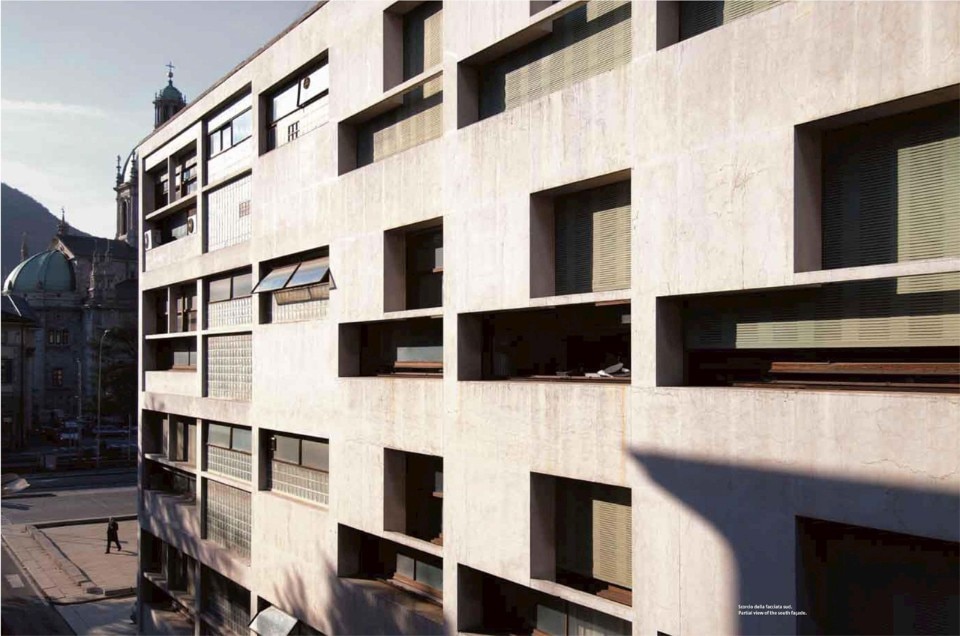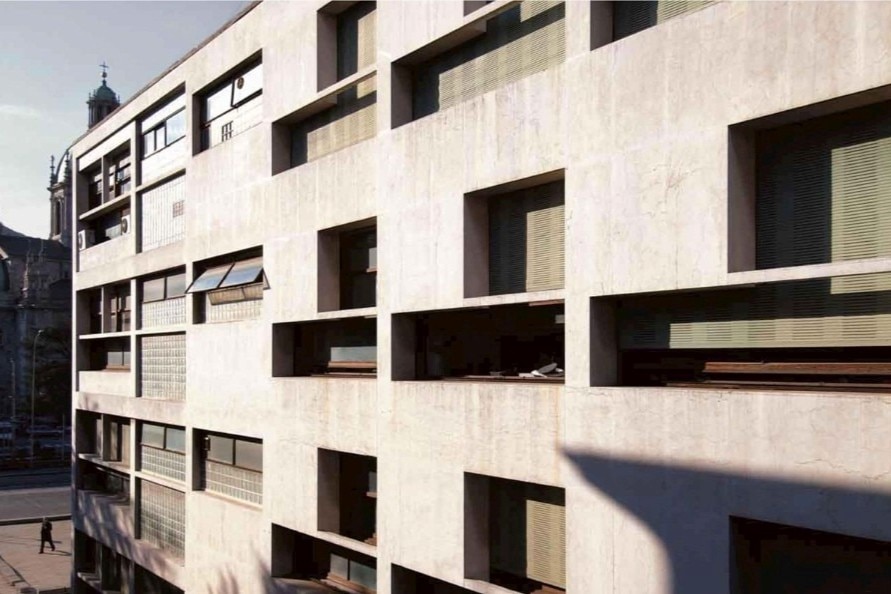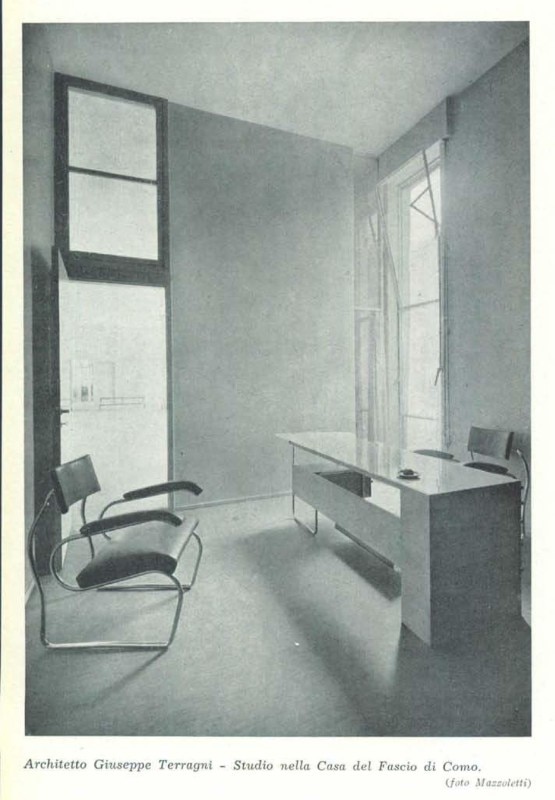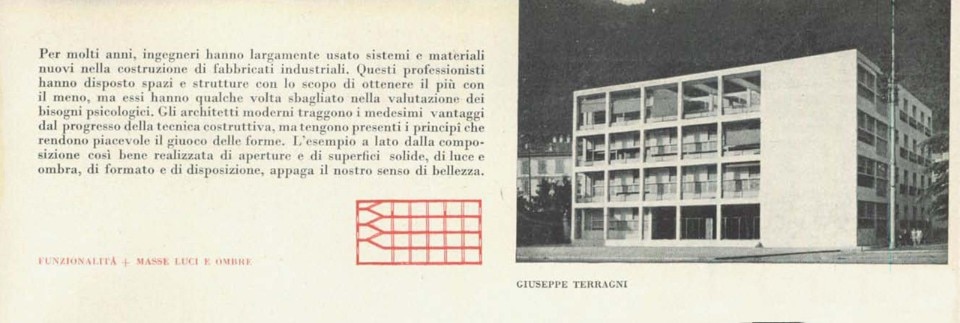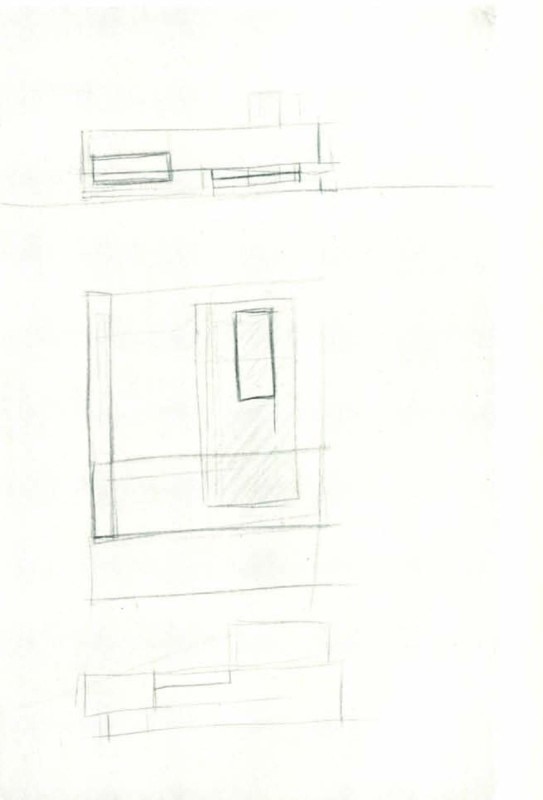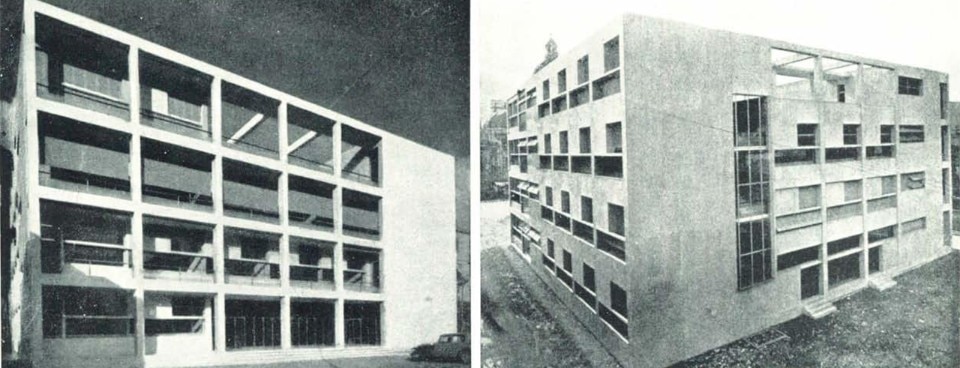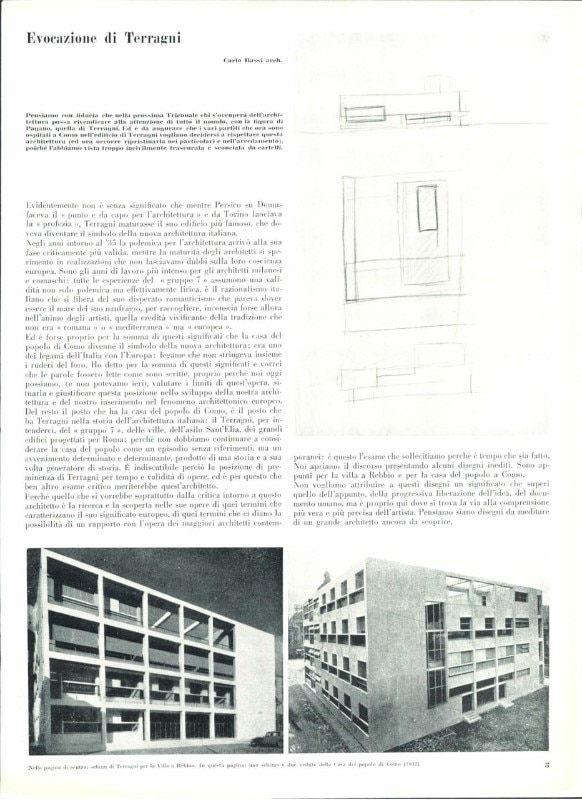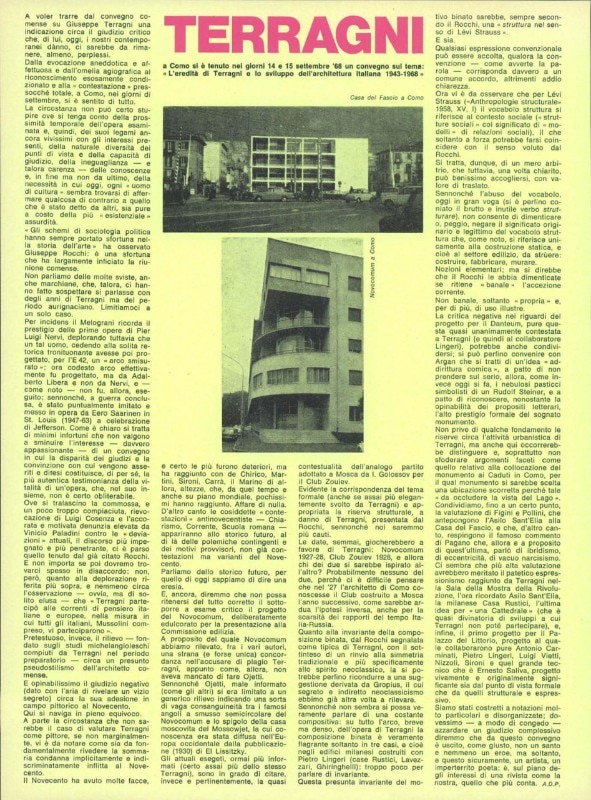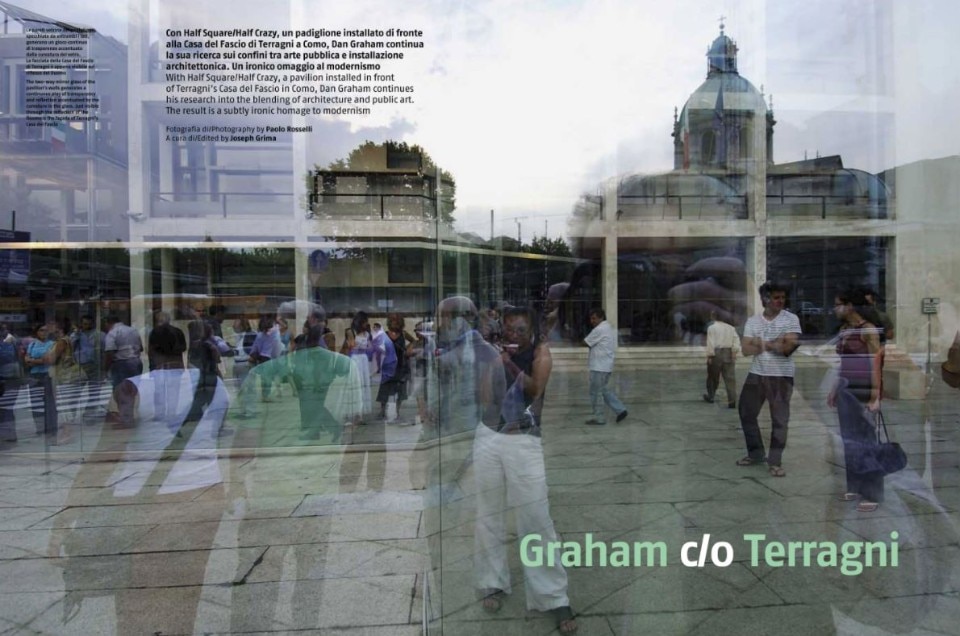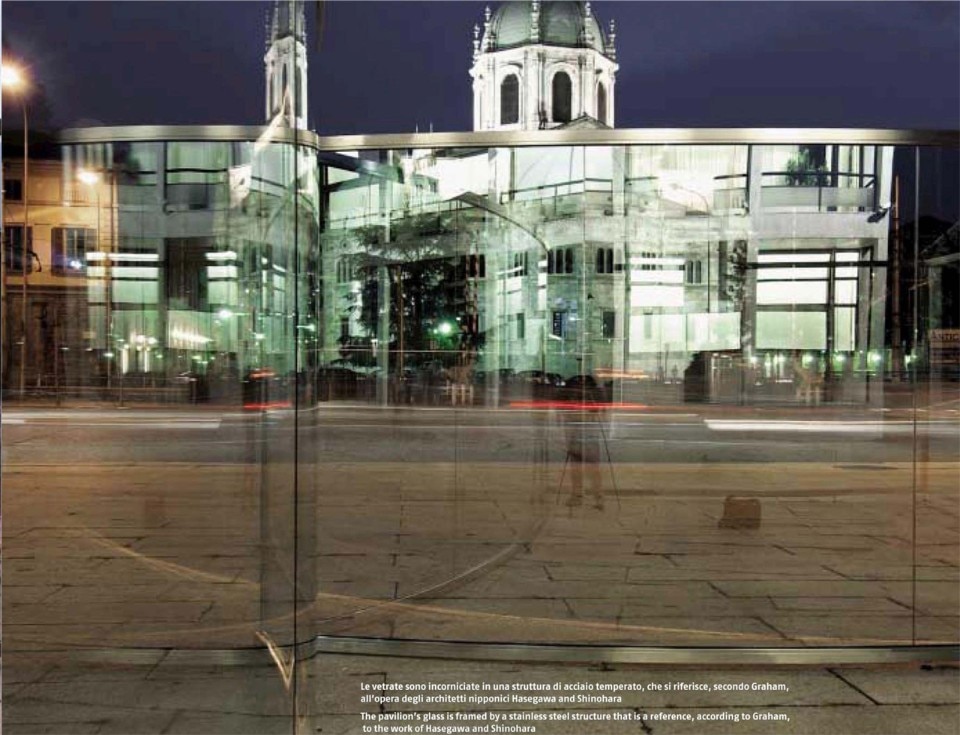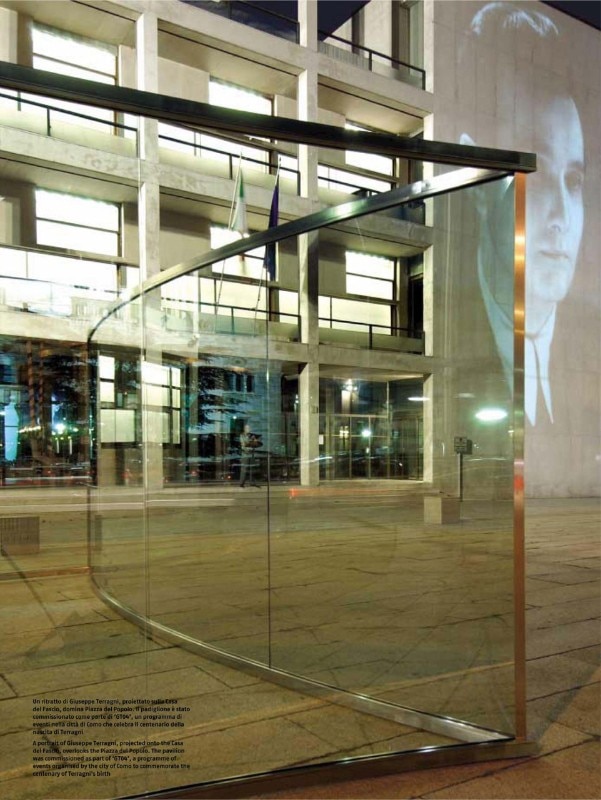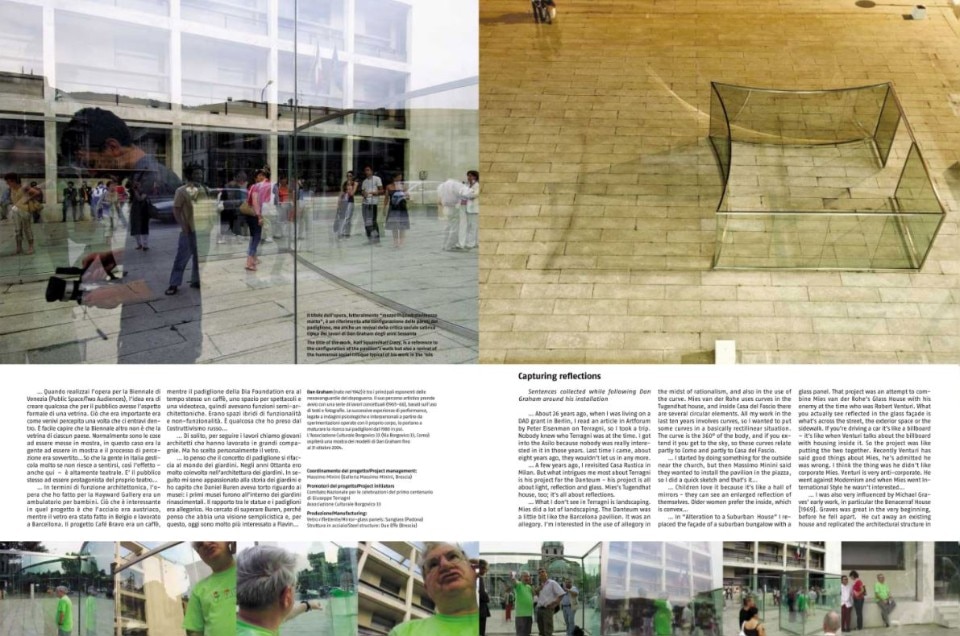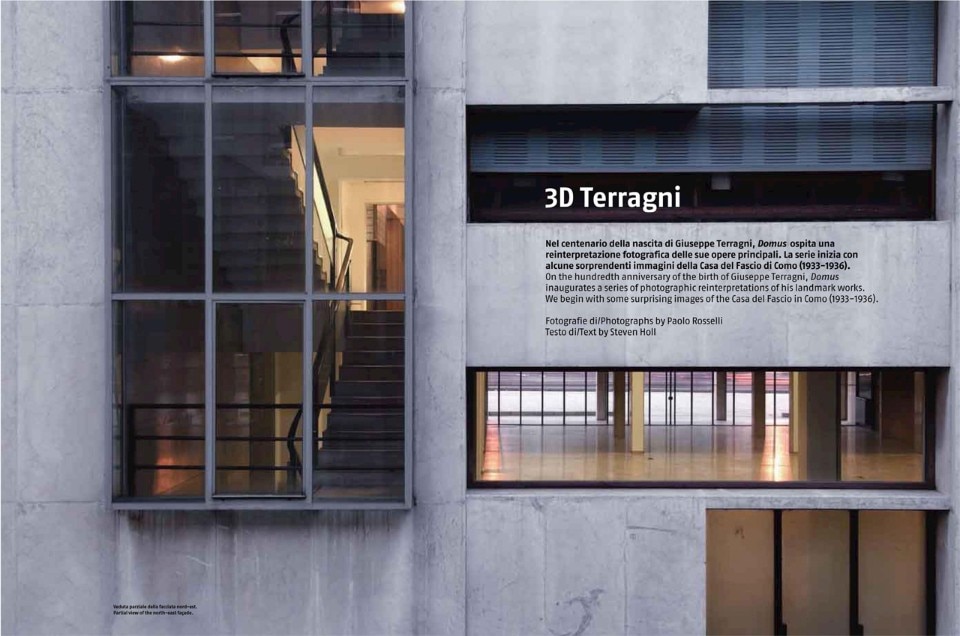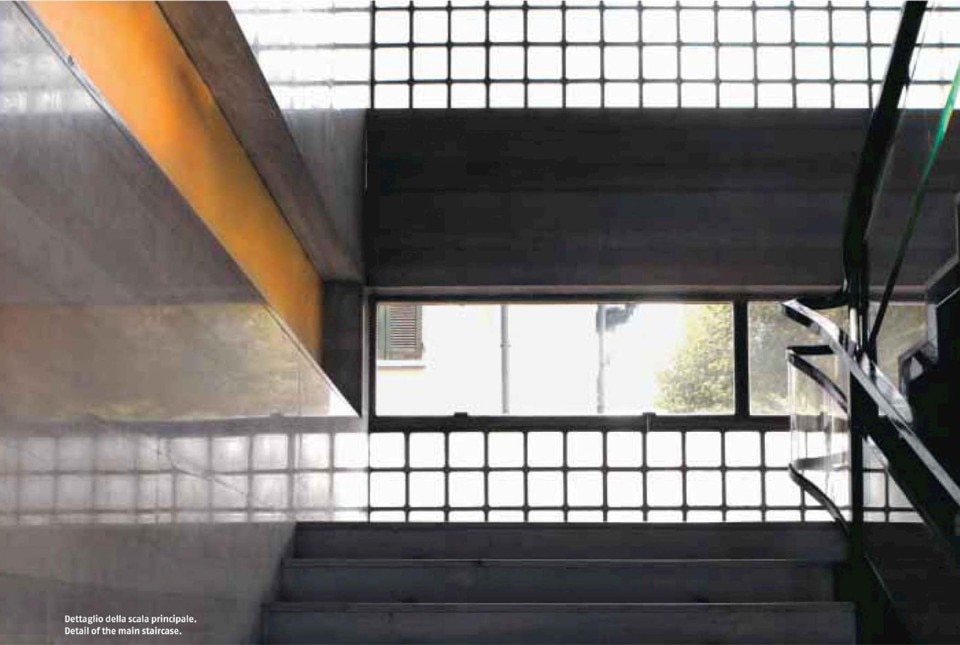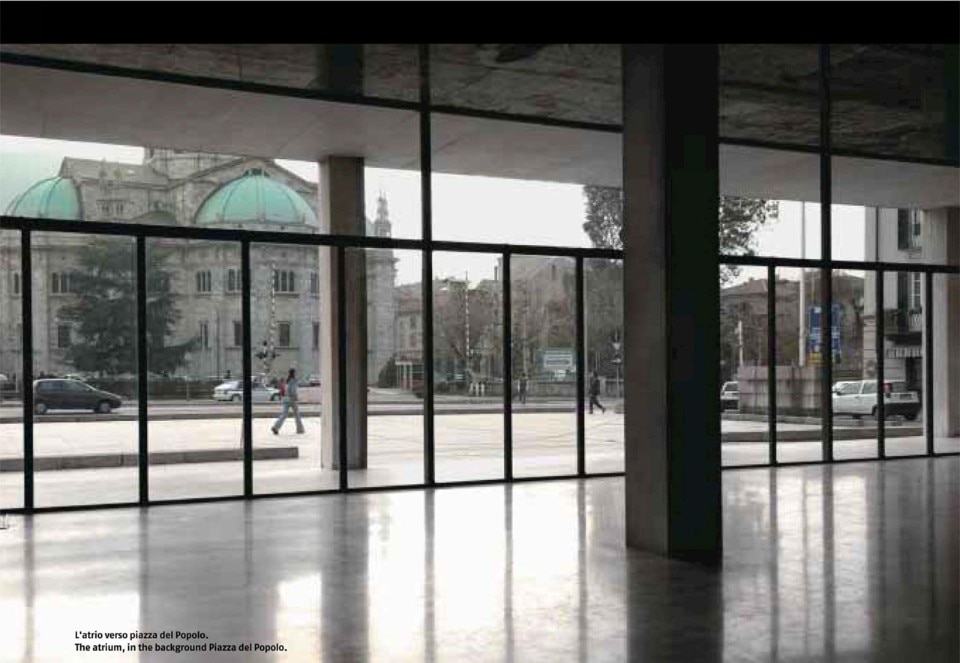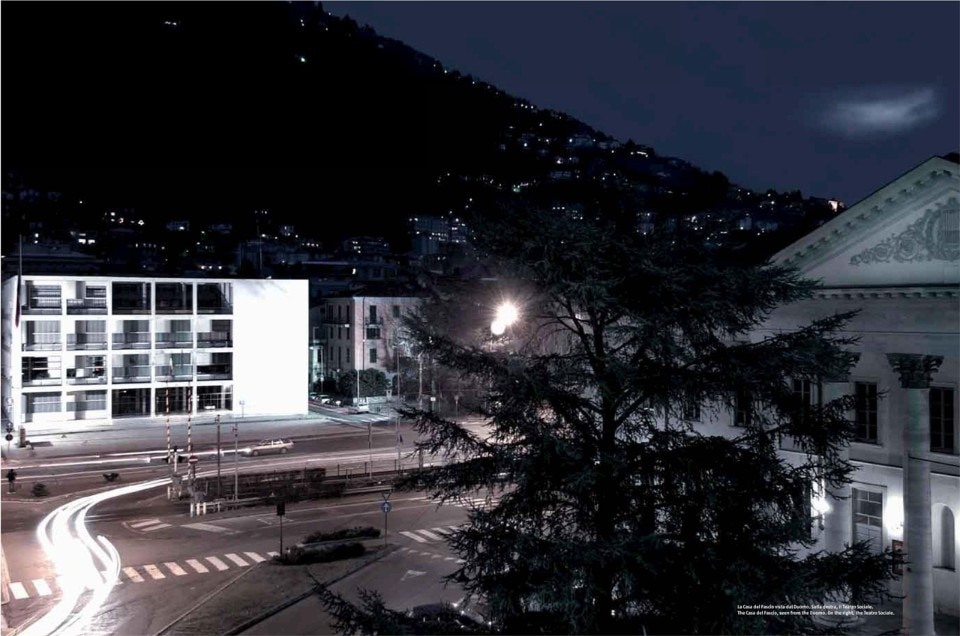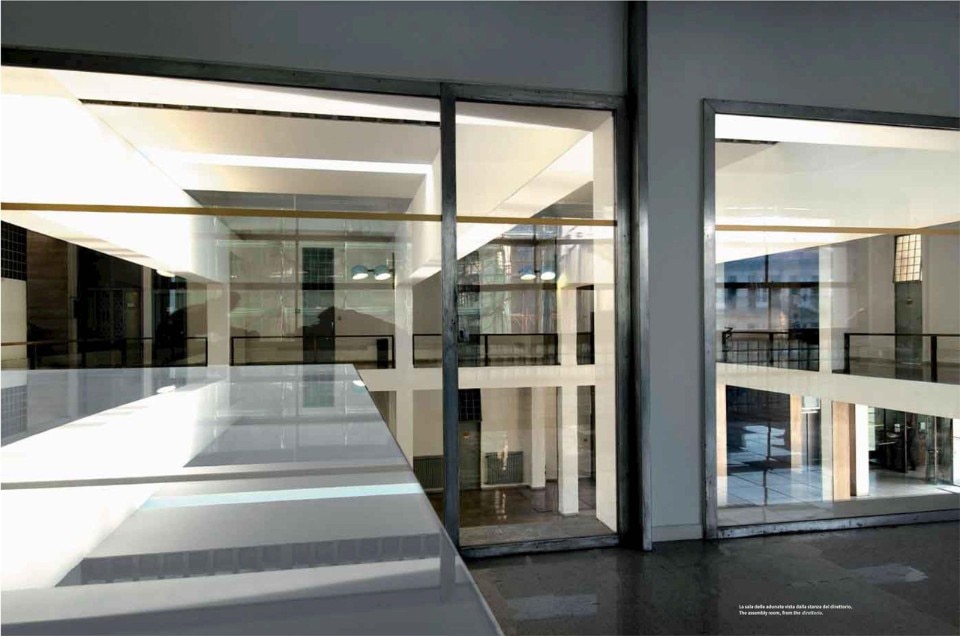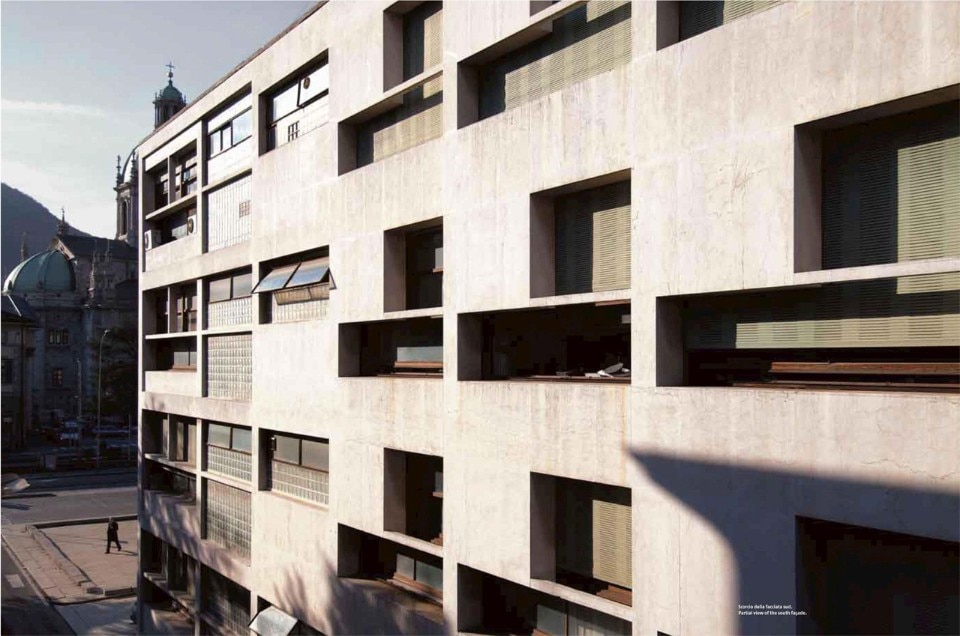An icon for sure, but an icon of what? The most emblematic work realized by Giuseppe Terragni, – an image in itself that today is quite naturally associated to the greatest expressions of Italian rationalism and international modern – is also the one that has gone through the longest and most complex metamorphosis in terms of critical reception of its shape and meaning.
Terragni designed the Casa del fascio in Como in 1932, and by 1936 the building was completed. Those were the years in which Italy’s initial enthusiasm for an international, modernity expressed by MIAR (Italian Movement for Rational Architecture), Gruppo 7, and the BBPR firm, were already being opposed by the fascist regime. Quoted by the architect Mario Labò in a posthumous eulogy, the historian and critic Raffaello Giolli had said: “The State to which the architects had given credit, to which they had made themselves servants, after a few oblations showed its character, choosing the Piacentinis instead of the Terragnis” (Omaggio a Giolli, Domus 217, January 1947).
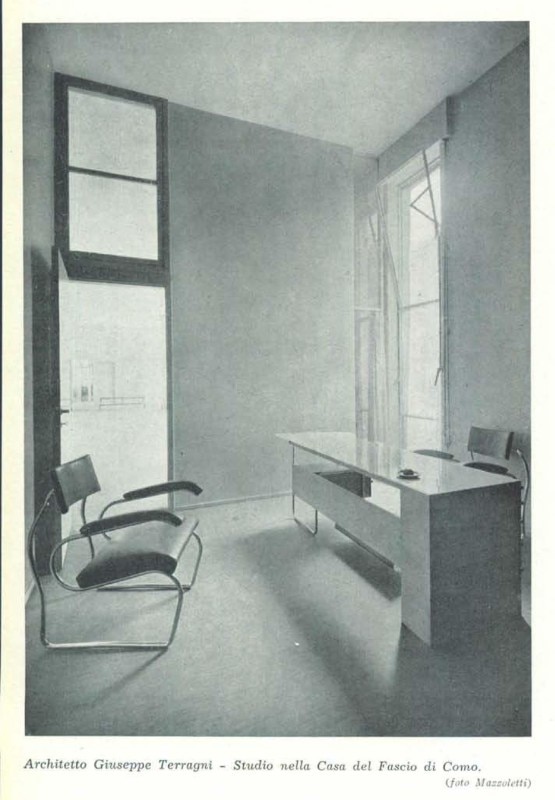
The Casa del fascio project was actually published for the first time not on Domus, but on another periodical that was part of the same publishing group at the time, Giuseppe Pagano’s Casabella. It appeared on Domus as something already assimilated within a modern and present “whole”: the first time was a quick reference to the tubular metal furnishings (Domus 135, March 1939), then came the long review-essay entitled Alla ricerca di un’architettura vivente (The quest for a living architecture, Domus 192, December 1944), based on the texts by Albert Frey and Max Bill, and expressed through the graphics then edited by Bruno Munari: an example of “functionality (for) masses light and shadow”, the Casa del fascio, “satisfying our sense of beauty” represented how “...modern architects take advantage of the progress in construction techniques, while keeping in mind the principles that make the play of forms pleasant”.
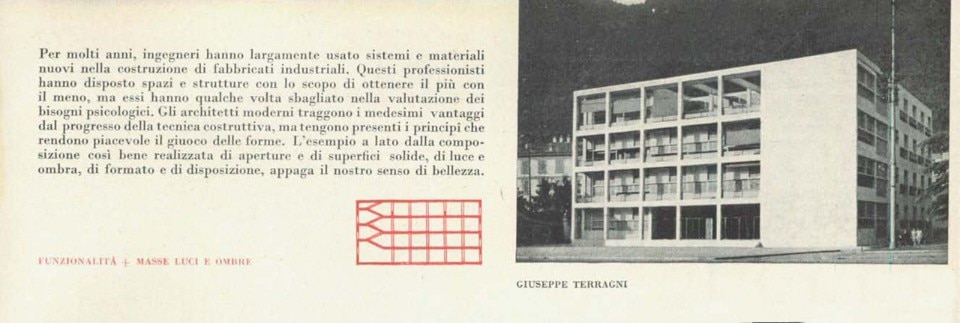
Then, wartime and the fascist period ended, and Terragni’s building plunged in the depths of that nigredo from which it would emerge with an all-new importance for contemporary architectural debate. Terragni was not forgotten by his world, indeed he was “evoked” in 1949 on the pages of Domus: unpublished sketches of what was then called Casa del Popolo were published, and “We must not continue”, said architect Carlo Bassi, “to consider (Casa del popolo) as an episode without references, but a determined and decisive event, the product of history and in turn the generator of history. (...) What we would like most of all from the critics of this architect is to search for and discover in his works those terms that characterise his European significance, those terms that give us the possibility of a connection to the work of the greatest contemporary architects: this is the examination we urge, because time has come to finally do it”. (Evocazione di Terragni, Domus 237, June 1949)
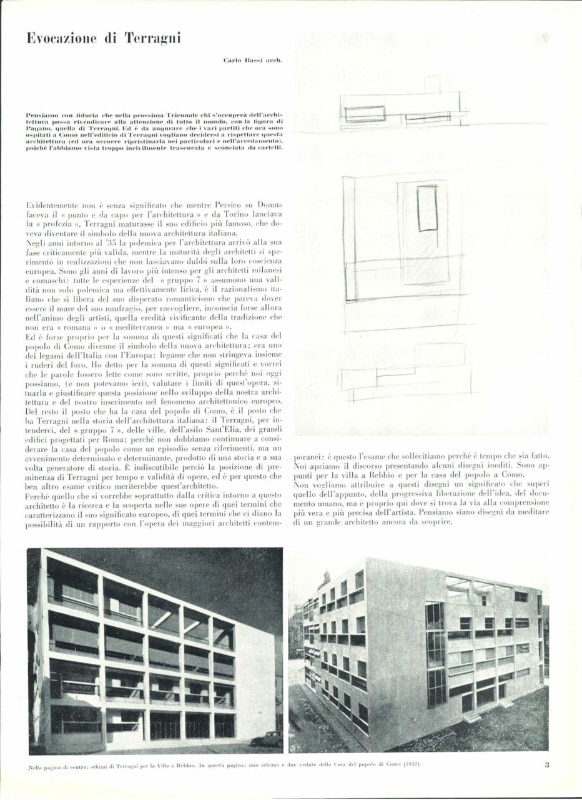
The following years were actually the most turbulent, with the building threatened to go up for auction in 1956, and only the intervention of a group led by Bruno Zevi managing to avert the eventuality. Throughout the 60s, then, Domus channeled the multiplicity of different positions expressed about the building in the Italian context, mostly through Agnoldomenico Pica's vivid columns (Ricorre il ventesimo anniversario della scomparsa di Terragni, Domus 404, July 1963; Terragni, Domus 467, October 1968): Terragni's rationalism as a rejection of futurism, complex reinterpretations of his “Italian” or “international” stance, if not allegations of outright plagiarism of Russian constructivism.
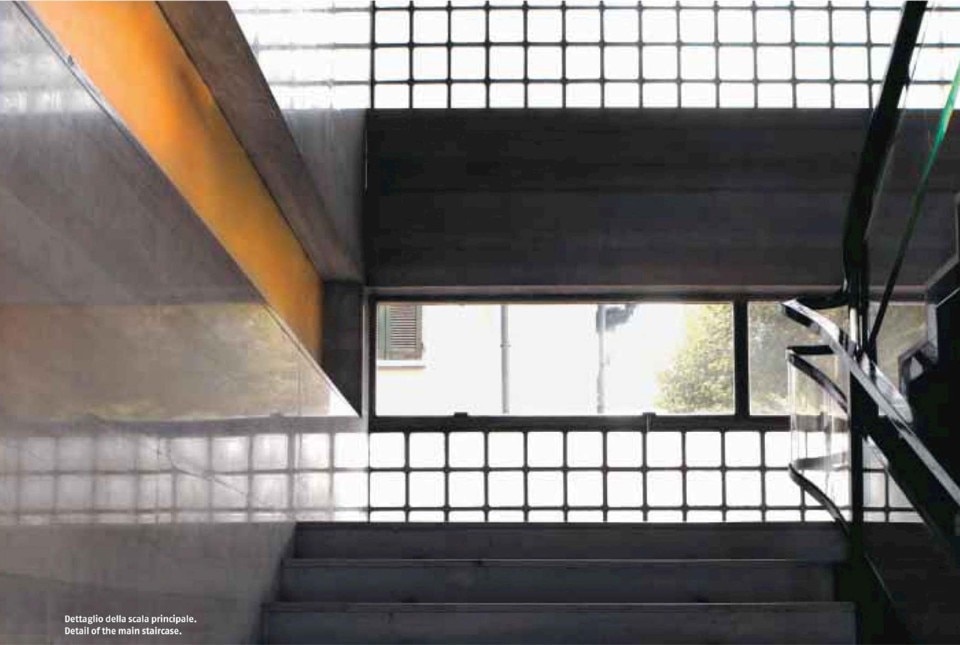
By the end of the decade, a new, game-changing interpretation appeared: Peter Eisenman’s analysis, a linguistic and compositional analysis that “...by breaking the link between ethics, politics and language, disrupts the main canon of legitimisation of the so-called ‘modern movement’”. (Tra Terragni ed Eisenman, Domus 86, March 2004). Revolutionizing Terragni studies through seminal essays that appeared in Casabella, Perspecta and Oppositions, Eisenman would then edit a unitary publication in 2004 – Giuseppe Terragni Transformations Decompositions Critiques, reviewed on Domus in March – the year of Terragni’s definitive consecration on the occasion of his centenary, and of Casa del fascio as his iconic work.
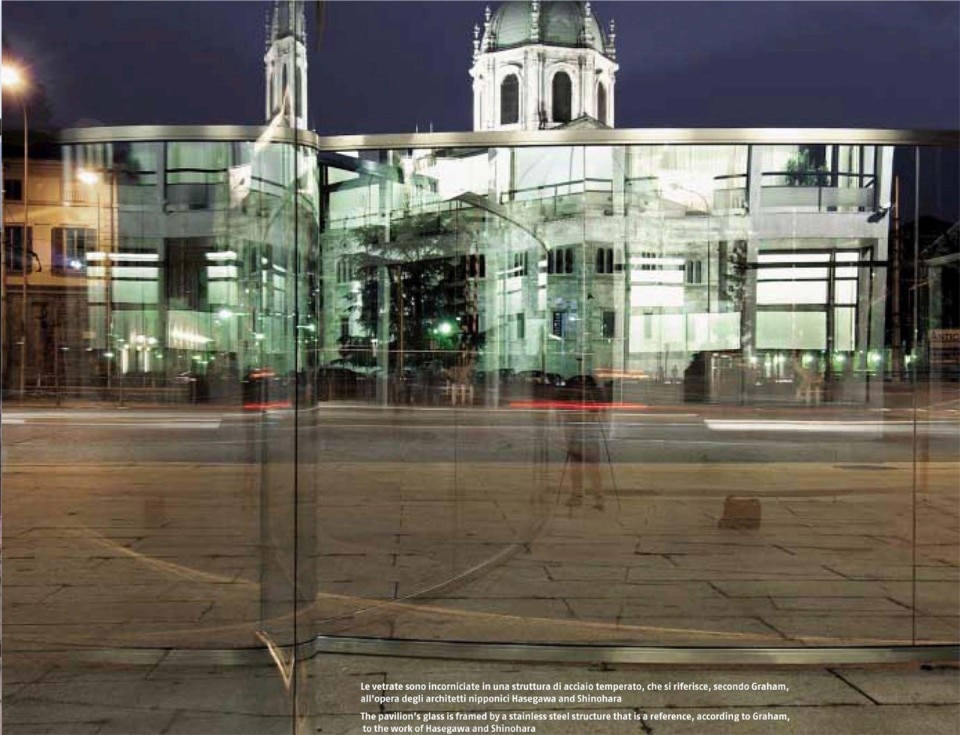
A national committee for the celebrations (GT04) was formed. The Casa del fascio became the epicenter for a multiplicity of events. Above all, it became again the subject of new interpretations, which followed the linguistic path opened up by Eisenman.
“I read an article in Artforum by Peter Eisenman on Terragni, so I took a trip. Nobody knew who Terragni was at the time” artist Dan Graham told Domus in 2004, emphasizing the affinity between his formal research and the circular elements which are unexpectedly present in the building. “All my work in the last ten years involves curves, so I wanted to put some curves in a basically rectilinear situation. The curve is the 360° of the body, and if you extend it you get to the sky, so these curves relate partly to Como and partly to Casa del fascio”. And this is also the substance of his Half Square/Half Crazy installation/pavilion, which for months would stand on the square facing the building. (Graham c/o Terragni, Domus 873, September 2004)

The photographic reinterpretation by Paolo Rosselli, which appeared on Domus 867 in 2004, would then powerfully synthesize the “Como metamorphosis”, helped by Steven Holl's words accompanying the images: “This radical building carried its political meanings first. Now, 68 years later, the distance in time give prominence to its space, which emerges in a wordless, tragic silence (…) If (architecture) survives political tragedies and the passing of architectural trends, its hidden dimensions intensify and can be rediscovered, much like one rediscovers ‘new’ feelings aroused by an old poem”.
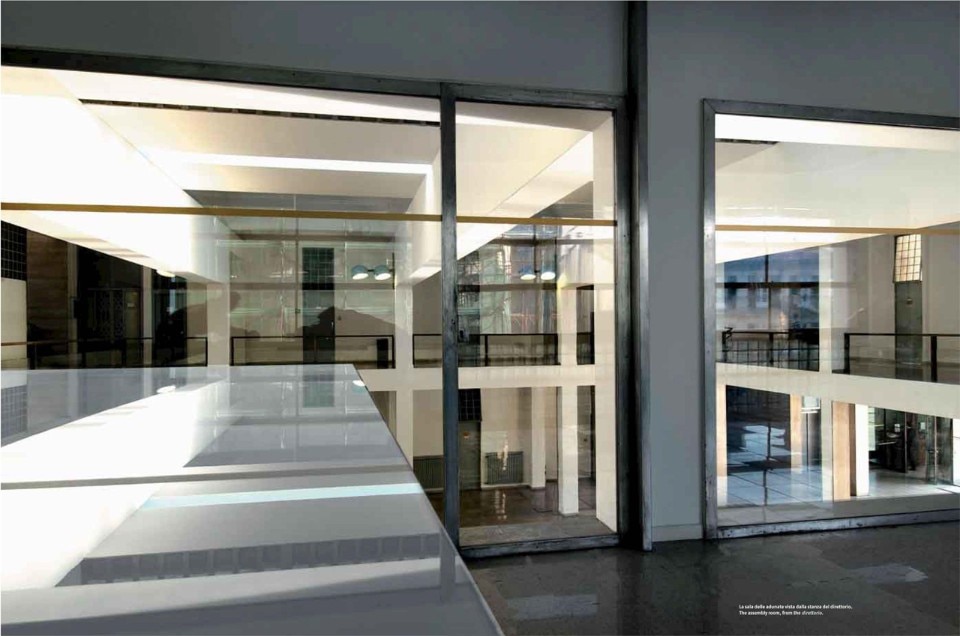
A quest for detail and a design game, says Holl, which also includes those furniture pieces that were mentioned as an opening to our review: “As a promise showing through a gauge, Terragni’s passion for detail shows his enthusiasm for play. (…)To sit in the cantilevered, black and chrome tube chair invented for the building, and feel the discordant jiggle between the horizontal and vertical planes, is to experience Terragni’s chuckle of inventive joy”.
“Time-distance” would finally summarize the American architect “has a way of erasing urgent events – we grasp for issues that are lost in time. In that silence the intensity, the compression of absolute architecture appears”.
